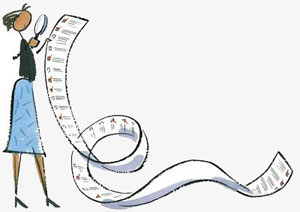
Benjamin Graham (1894 – 1976), father of fundamental analysis, made the “buying below book” strategy famous.
He believed stocks that sold for two-thirds, or less, of their net current assets were bargains.
Because Graham was so successful, his methods of analysis gained a wide following and many professionals now watch for these undervalued stocks.
Due to the market’s efficiency, such bargains are now rare, but if you look hard enough you can occasionally find them!
Book value is the amount that would be left for common shareholders if all the tangible and intangible assets of a company could be liquidated and all the long and short-term debt, taxes, and preferred shareholders were paid.
Tangible assets include the physical plant, inventories and money the company is owed, while intangible assets are the value of patents or brand names – often known as “Good Will.”
In Simplest Terms, Book Value Is Assets Less Liabilities
The problem in Assets includes existing land and buildings, inventory, cash in the bank and etc. held by the company.
The problem in assuming you can sell off these assets and receive their listed value is that such values are accounting numbers, but otherwise pretty unrealistic.
Consider a company owning a 30 year old building.
That building might have been depreciated fully and is carried on the books for 0, while it might have a resale value of millions.
The book value grossly understates the sell-off value of the company.
On the other hand, consider a fast-changing industry with a three year old computer equipment which has a few more years to go before being fully depreciated, but that equipment couldn’t be sold for even 10% of its book value.
Here the book value overstates the sell-off value.
So consider book value to be assets less liabilities, which are just numbers, not real items!
If you really want to know how much a company should be sold off for, hire a good investment banker!
The Price-To-Book Value Ratio (also known as the Price/Equity Ratio) is determined by dividing market price per share by book value per share.
Book value is generally determined by subtracting total liabilities from total assets and then dividing by the number of shares outstanding.
It represents the value of the owners equity based upon the historical accounting activities.
If accounting truly captured the current values of the firm, then one would expect the current stock price to sell near its accounting book value.
A lower Price-To-Book Value Ratio could mean that the stock is undervalued.
But it could also mean that something is fundamentally wrong with the company!
As with most ratios be aware this varies much by industry.
The Price-to-Book Value Ratio also gives some idea of whether you’re paying too much for what would be left if the company went bankrupt immediately.










